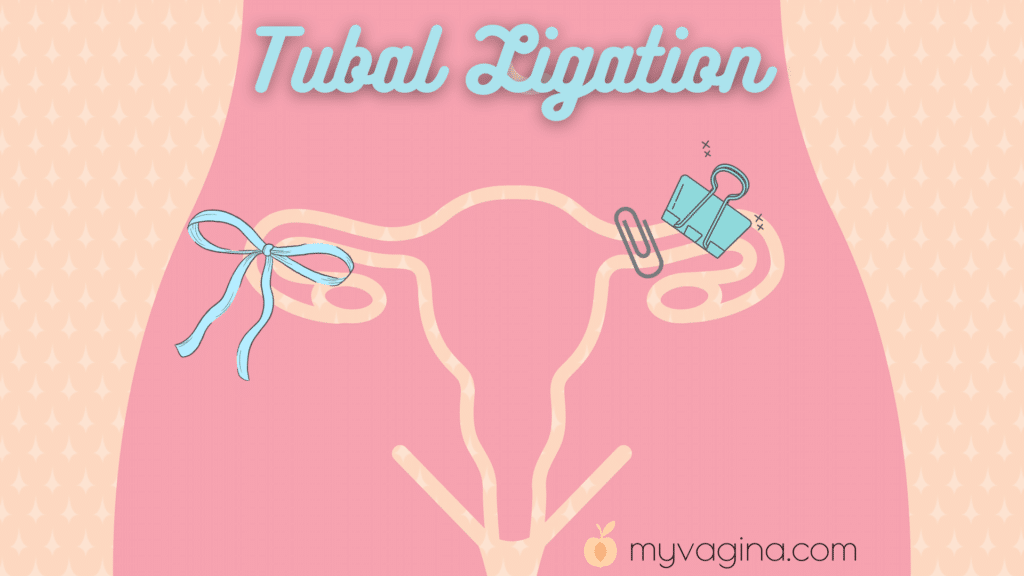A tubal ligation is a permanent form of birth control for women whereby the fallopian tubes are blocked to prevent the egg and sperm meeting. The egg remains trapped at the top of the fallopian tube and is harmlessly absorbed back into your body.
The contraceptive effect of having your tubes tied is immediate after the procedure, but it’s important to be sure you are definitely not pregnant first.
A trapped, fertilised egg could result in an ectopic pregnancy. This is highly unlikely, but it’s important to be sure. Sterilisation does not protect against sexually transmitted infections. You can expect to be feel recovered after about a week post-procedure.
Complications of a tubal ligation are uncommon, but as with any surgery, there are risks involved. Your healing time will depend on your overall health, age, and fitness.
Tubal ligation has a tiny failure rate – just 0.5 per cent. That means out of every 100 women who get their tubes tied, less than one will get pregnant.
The procedure in some cases can fail or the tube ends find their way to each other again. There is an increased risk of ectopic pregnancy with these types of pregnancies.
Men can also have sterilisation procedures performed to block the passage of sperm out of the body, called a vasectomy.
Choosing to get your tubes tied
Being sterilised is a big decision, but usually one that women feel confident making if they are at that stage.
Getting your tubes tied is very final, so it’s advisable to make this decision when you feel relaxed and calm, and not when you are under stress. This can include financial or relationship stress.
Many women know they never want to have children, and others are done having their children. Whatever the reason, a woman’s choice to permanently close off her reproductive system is still met with suspicion, particularly young women.
People are always very sure they will change their minds, and many women have been refused tubal ligation simply because other people think she can’t make up her own mind.
We’ve still got a ways to go on that one, but as more women opt for permanent sterilisation, it is becoming more accepted. Reversals are possible, but can be expensive and have a high failure rate.
The tubal ligation surgery
The typical operation is via laparoscopic surgery with a general anaesthetic. This usually means at least a day if not a day and night in hospital.
An incision (or possibly two) is made in your belly button and one just under your pubic hair line on the abdomen. The laparoscope, which is a very small telescope with a camera attached, is inserted into your abdomen.
The fallopian tubes are clipped or a ring is applied, or the tube may be simply cut and tied (getting your tubes tied). Gas is used to fill the abdomen so that your surgeon can see what they are doing better, which can cause pain in other areas of your body as it makes its way out.
A massage, walking around or other movement helps dispel the gas faster. If a laparoscopy is not possible, a laparotomy may be used instead, with a bigger incision in the abdomen. This bigger cut may mean a longer stay in hospital.
What happens to my periods after a tubal ligation?
Your periods stay exactly the same, because the hormonal signals that cause your period are not interrupted. The only difference is that you can’t get pregnant anymore, because the egg can’t be fertilised. It is inaccessible.
Will I got into menopause after a tubal ligation?
Your normal menstrual cycle is unaffected by the female sterilisation procedure. If you are close to menopause, the procedure may not be recommended, since you are so close to being infertile anyway.
Your hormones will continue to function in exactly the same way as always.
How will a tubal ligation affect my sex life or libido?
The female sterilisation procedure has no impact on your sex life, except to remove the fear of pregnancy from sex. This may make little to no difference to you, or it may make a world of difference. The freedom from unexpected pregnancy can feel marvellous!
Can I reverse a tubal ligation?
If you want to untie your tubes, there is about a 50 per cent success rate of a pregnancy afterwards. This is because of scar tissue blocking the fallopian tube still.
Assisted reproductive treatments can help overcome this. Again, higher rates of ectopic pregnancies occur after a reversal of a tubal ligation.
Female sterilisation should only be performed when a woman is pretty certain she doesn’t want to grow any more of her own babies, regardless of what happens over a lifetime. This could include losing a child or changes in relationships.
Reasons for and against female sterilisation
For female sterilisation
- Sterilisation is a very effective method of contraception
- Many countries offer tubal ligation on the public health service (wait times may be long)
- Tubal ligation is a permanent contraceptive method
- There are no side-effects now or later
- Periods and ovulation stay the same
- No change to menopause or hormones
- Great for those who don’t want to use hormonal birth control or condoms for the rest of fertility
- Sex and libido is unaffected
Against female sterilisation
- Not a good option if you want children later or may want them later
- If you are young and/or prone to changing your mind
- If you are having relationship problems now
- More reversals when procedure done at the same time as abortion or caesarean delivery
The most comprehensive vaginal microbiome test you can take at home, brought to you by world-leading vaginal microbiome scientists at Juno Bio.
Unique, comprehensive BV, AV and 'mystery bad vag' treatment guide, one-of-a-kind system, with effective, innovative treatments.
Promote and support a protective vaginal microbiome with tailored probiotic species.






